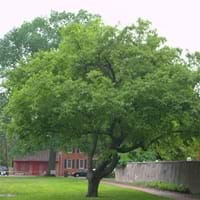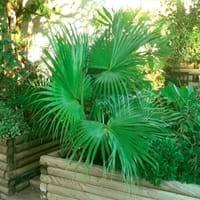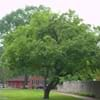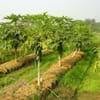Life Span
Perennial
Perennial
Type
Flowering Plants, Fruits, Trees
Palm or Cycad
Origin
Central America, Europe, North America
United States, Southeastern United States, South-Central United States
Types
Not Available
Not Available
Number of Varieties
Not Available
Habitat
Hedge, Scrubs, Woods
Floodplains, Lowland, River side, Swamps
USDA Hardiness Zone
4-8
7-12
AHS Heat Zone
Not Available
12-6
Sunset Zone
Not Available
H1, H2, 3b, 4, 5, 6, 7, 8, 9, 12, 13, 14, 15, 16, 17, 19, 21, 22, 23, 24
Habit
Not Available
Clump-Forming
Flower Color Modifier
Not Available
Bicolor
Fruit Color
Yellow
Chocolate, Black
Leaf Color in Spring
Dark Green
Green, Gray Green, Dark Green
Leaf Color in Summer
Green
Gray Green, Dark Green
Leaf Color in Fall
Brown, Green, Light Yellow
Green, Gray Green, Dark Green
Leaf Color in Winter
Not Available
Olive, Gray Green, Dark Green
Leaf Shape
Oblong
Circular, dissected, long and linear
Plant Season
Summer
Spring, Summer, Fall, Winter
Sunlight
Full Sun, Partial shade
Full Sun, Partial Sun, Partial shade
Type of Soil
Loamy
Clay, Loam, Sand
The pH of Soil
Neutral
Acidic, Neutral, Alkaline
Soil Drainage
Well drained
Poorly Drained
Bloom Time
Fall, Summer
Early Summer
Tolerances
Drought
Wet Site, Salt
Where to Plant?
Ground
Container, Ground
How to Plant?
Grafting, Seedlings, Transplanting
Seedlings, Stem Planting
Plant Maintenance
Medium
Medium
Watering Requirements
Medium
Do Not over Water, Never Over-water, Requires regular watering, Requires watering in the growing season
In Summer
Lots of watering
Lots of watering
In Spring
Moderate
Moderate
In Winter
Average Water
Average Water
Soil pH
Neutral
Acidic, Neutral, Alkaline
Soil Type
Loamy
Clay, Loam, Sand
Soil Drainage Capacity
Well drained
Poorly Drained
Sun Exposure
Full Sun, Partial shade
Full Sun, Partial Sun, Partial shade
Pruning
Prune when plant is dormant, Remove dead or diseased plant parts
Remove damaged leaves, Remove dead leaves
Fertilizers
All-Purpose Liquid Fertilizer
fertilize every 2-3 weeks while growing
Pests and Diseases
Aphids, Curculio occidentis, Japanese Beetles, Leaf Rollers, Leafminer, Mites, Red blotch, sawflies, Scale, Stink bugs
Insects
Plant Tolerance
Drought
Drought
Flowers
Yes
Insignificant
Flower Petal Number
Single
Single
Foliage Texture
Medium
Bold
Foliage Sheen
Matte
Matte
Attracts
Not Available
Birds
Allergy
Digestive Problems, Respiratory problems
Avoid during Pregnancy
Aesthetic Uses
Showy Purposes
Beautification, Landscape Designing, Showy Purposes
Beauty Benefits
Beautiful Skin
Not Available
Environmental Uses
Food for birds
Air purification, Food for insects, Prevent Soil Erosion
Medicinal Uses
Anthelmintic, Antibacterial, Astringent, Hypnotic, Laxative, Refrigerant
Asthma, Baldness, Cold, Cough, Migraines, Sore throat
Part of Plant Used
Fruits
Whole plant
Other Uses
Edible syrup, Jam, Jelly, Used As Food
Decoration Purposes, Employed in herbal medicine, Showy Purposes, Used as Ornamental plant, Used for its medicinal properties
Used As Indoor Plant
No
Yes
Used As Outdoor Plant
Yes
Yes
Garden Design
Not Available
Bog Garden, Feature Plant, Foundation, Hedges, Mixed Border, Tropical
Botanical Name
Malus sylvestris
SABAL minor
Common Name
European crab apple
Bush Palmetto, Dwarf Palmetto, Little Blue Stem, Swamp Palmetto
In Hindi
european crab apple
बौना पल्मेट्टो
In German
Der Holzapfel, Europäischer Wildapfel
Zwerg Palmetto
In French
Le Boquettier, le Pommier sauvage ou Pommier des bois
Palmetto nain
In Spanish
Malus sylvestris, el Manzano silvestre, manzano silvestre europeo
Palmetto enano
In Greek
Ευρωπαϊκή μήλο καβουριών
Νάνος Palmetto
In Portuguese
Malus sylvestris
Palmetto anão
In Polish
Jabłoń dzika
Dwarf Palmetto
In Latin
european crab apple
Pumilio Palmetto
Phylum
Magnoliophyta
Magnoliophyta
Class
Magnoliopsida
Liliopsida
Family
Rosaceae
Arecaceae
Clade
Angiosperms, Eudicots, Rosids
Angiosperms, Commelinids, Monocots
Tribe
Not Available
Not Available
Subfamily
Not Available
Coryphoideae
Number of Species
Not Available
Importance of European Crab Apple and Dwarf Palmetto
Want to have the most appropriate plant for your garden? You might want to know the importance of European Crab Apple and Dwarf Palmetto. Basically, these two plants vary in many aspects. Compare European Crab Apple and Dwarf Palmetto as they differ in many characteristics such as their life, care, benefits, facts, etc. Every gardener must at least have the slightest clue about the plants he wants to plant in his garden. Compare their benefits, which differ in many ways like facts and uses. The medicinal use of European Crab Apple is Anthelmintic, Antibacterial, Astringent, Hypnotic, Laxative and Refrigerant whereas of Dwarf Palmetto is Asthma, Baldness, Cold, Cough, Migraines and Sore throat. European Crab Apple has beauty benefits as follows: Beautiful Skin while Dwarf Palmetto has beauty benefits as follows: Beautiful Skin.
Compare Facts of European Crab Apple vs Dwarf Palmetto
How to choose the best garden plant for your garden depending upon its facts? Here garden plant comparison will help you to solve this query. Compare the facts of European Crab Apple vs Dwarf Palmetto and know which one to choose. As garden plants have benefits and other uses, allergy is also a major drawback of plants for some people. Allergic reactions of European Crab Apple are Digestive Problems and Respiratory problems whereas of Dwarf Palmetto have Avoid during Pregnancy respectively. Having a fruit bearing plant in your garden can be a plus point of your garden. European Crab Apple has showy fruits and Dwarf Palmetto has showy fruits. Also European Crab Apple is flowering and Dwarf Palmetto is not flowering . You can compare European Crab Apple and Dwarf Palmetto facts and facts of other plants too.





